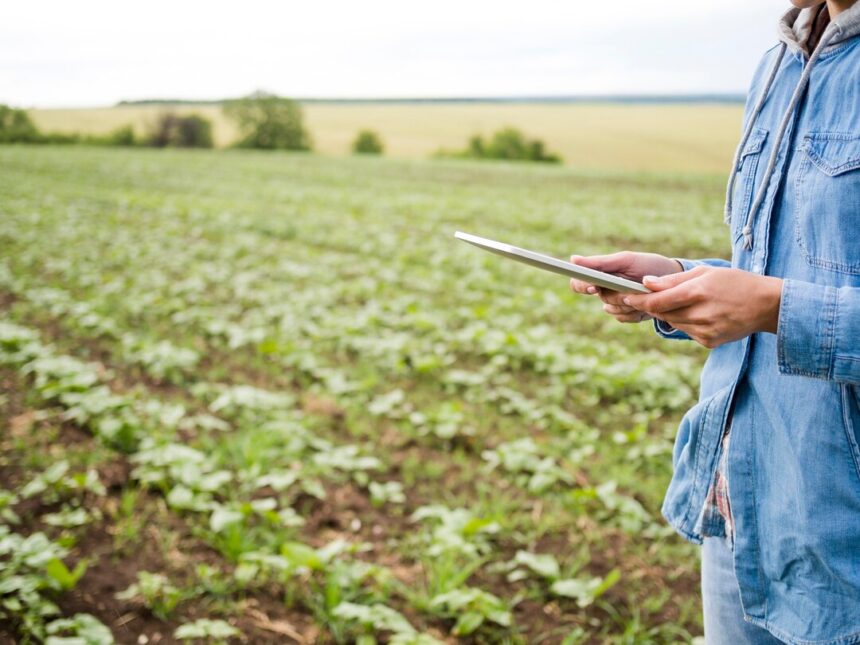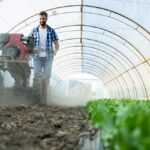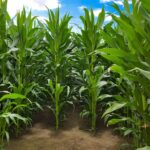In the rapidly evolving world of agriculture, technology plays a key role in improving crop yields, reducing costs, and enhancing farm management practices. One of the most valuable tools available to South African farmers today is crop monitors. These devices help monitor various aspects of crop growth, including moisture levels, temperature, soil health, and pest activity, providing real-time data to help farmers make informed decisions. Here’s how South African farmers can effectively use crop monitors to boost productivity and sustainability on their farms.
1. Understand the Benefits of Crop Monitors Crop monitors offer a range of advantages for farmers. By collecting real-time data, they help farmers:
- Monitor soil health: Measure key parameters like soil moisture, temperature, and nutrient levels.
- Track plant growth: Keep track of crop development, including factors that impact plant health and yield.
- Detect pests and diseases: Early detection of pests or diseases can help minimize crop damage and reduce the need for chemical interventions.
- Increase efficiency: Reduce resource waste by optimizing irrigation, fertilization, and pesticide use based on precise data.
By integrating crop monitoring into farm management, farmers can maximize productivity while minimizing environmental impact.
2. Choose the Right Crop Monitor for Your Farm There are various types of crop monitoring systems available, each suited to different needs. Here are a few options to consider:
- Soil Sensors: These sensors measure soil moisture, pH, temperature, and other key factors that impact crop growth. They can be placed in the ground and connected to a network to provide continuous data.
- Climate Monitors: These devices track weather conditions such as temperature, humidity, and rainfall. They are useful for predicting irrigation needs and preparing for weather events that may impact crops.
- Crop Imaging and Drones: These high-tech solutions capture aerial images of crops and use artificial intelligence (AI) to analyze plant health. Drones are particularly useful for monitoring large-scale farms and identifying problem areas such as pest infestations or nutrient deficiencies.
- Yield Monitors: These systems track crop yield during harvest, giving farmers valuable insights into field performance and helping to fine-tune future planting and fertilization practices.
3. Install and Set Up the System Once you have selected the right crop monitor for your farm, the next step is installation. Depending on the type of monitor, installation may vary:
- Soil Sensors: Place sensors in representative areas of the field, ideally at varying depths to gather comprehensive soil data. Ensure they are spaced evenly across the area to provide accurate readings.
- Weather Stations: Set up weather stations in open areas away from trees or buildings that could skew weather data. These stations need to be placed where they can collect consistent data across the entire farm.
- Drones or Imaging Devices: If using drones, ensure they are programmed to fly over key areas at regular intervals. Drones should be calibrated to capture clear images in various light conditions for more accurate analysis.
Once the devices are installed, connect them to the farm’s central data management system or a cloud-based platform where you can access the information remotely.
4. Monitor and Analyze the Data After setting up the system, the real value of crop monitors comes from the data they collect. Regularly review the data provided by the monitors to track key metrics:
- Soil Moisture Levels: This helps you optimize irrigation schedules and avoid overwatering or underwatering, which can stress crops.
- Temperature and Humidity: Monitoring these factors helps prevent heat stress and allows for better decision-making regarding crop protection, such as applying shade or adjusting irrigation during heatwaves.
- Pest and Disease Detection: If your monitor system includes pest or disease monitoring, use the alerts to apply treatments early, preventing widespread damage and reducing pesticide use.
Most crop monitoring systems offer data in easy-to-read dashboards that allow you to make informed decisions. Some systems even provide predictive analytics that can anticipate potential problems before they occur, helping you take proactive measures.
5. Use Data for Precision Farming Precision farming is about making data-driven decisions that optimize productivity and resource use. Crop monitors enable you to practice precision farming by providing insights into:
- Irrigation Management: By monitoring soil moisture levels in real-time, you can apply water only when and where it’s needed, reducing water wastage and improving crop growth.
- Fertilization: Soil sensors can help determine nutrient deficiencies, guiding your fertilization efforts to ensure crops receive the nutrients they need without excess application that could harm the environment.
- Pest and Weed Control: By identifying pest and weed issues early, you can target specific areas with precision rather than treating entire fields, which is more cost-effective and environmentally friendly.
6. Regular Maintenance and Calibration To ensure accuracy and reliability, it’s important to regularly maintain and calibrate your crop monitoring equipment. Clean sensors, check for any damage, and ensure the devices are functioning properly. Calibration is particularly important for weather stations and imaging devices, as improper calibration can lead to inaccurate data.
7. Integrate Crop Monitoring with Other Farm Management Systems For maximum efficiency, integrate your crop monitoring system with other farm management tools such as GPS, yield monitors, and financial software. This allows you to streamline operations, reduce costs, and increase productivity. For example, integrating your crop monitor data with GPS systems enables you to map out areas that need more irrigation or fertilizers, ensuring that each section of your farm is treated appropriately.
8. Stay Informed and Adapt The field of crop monitoring technology is continuously evolving. Keep up to date with new tools, techniques, and software updates to ensure that your farm stays competitive and efficient. Attend agricultural technology conferences, join online farming forums, and stay in touch with technology providers to learn about the latest advancements in crop monitoring.
Crop monitors are a game-changing tool for South African farmers who want to improve their farm’s productivity and sustainability. By understanding how to select, install, and use crop monitoring systems, farmers can make better decisions, optimize resource use, and ensure healthier crops. Whether you’re managing a small family farm or a large commercial operation, incorporating crop monitors into your farming practices can help you stay ahead of challenges and increase your yields.








